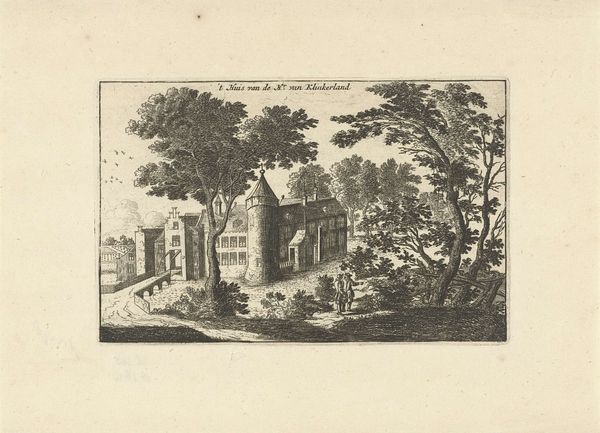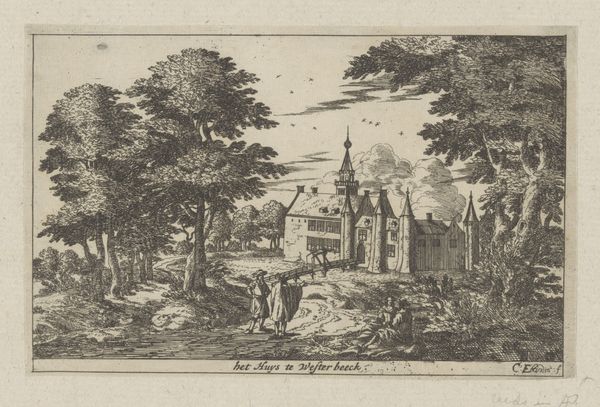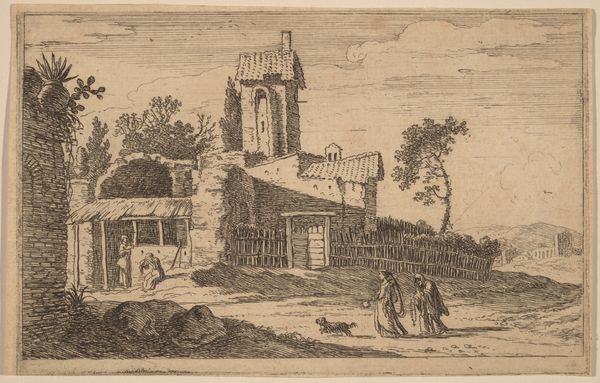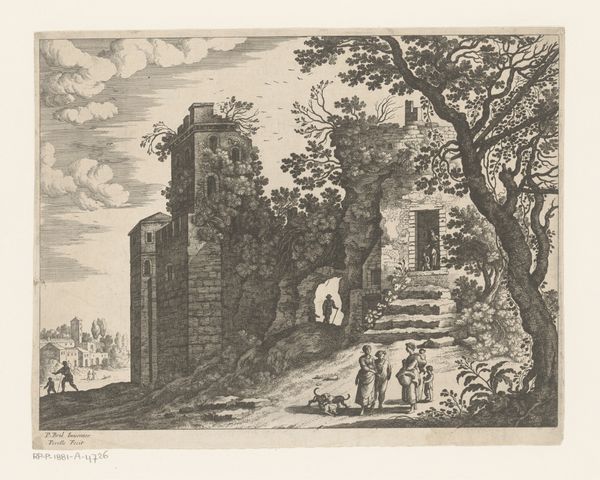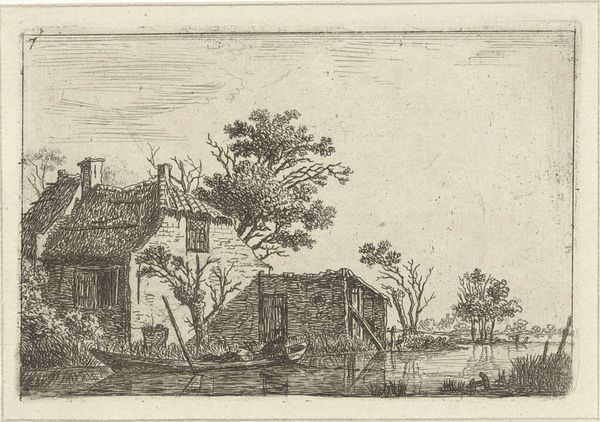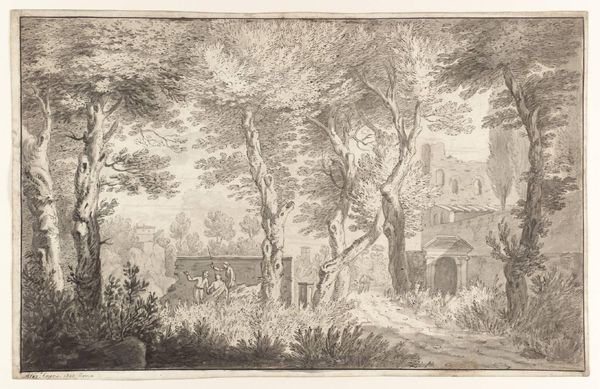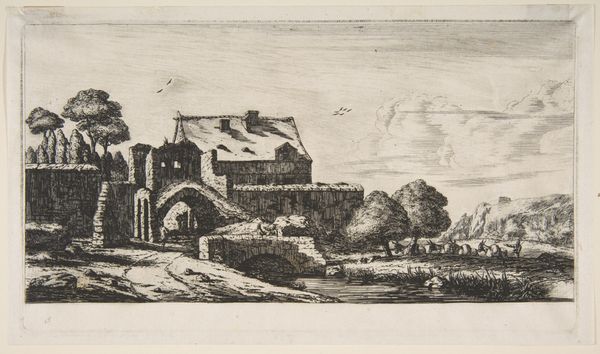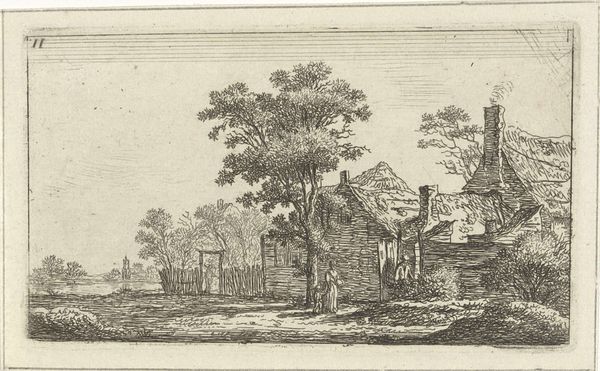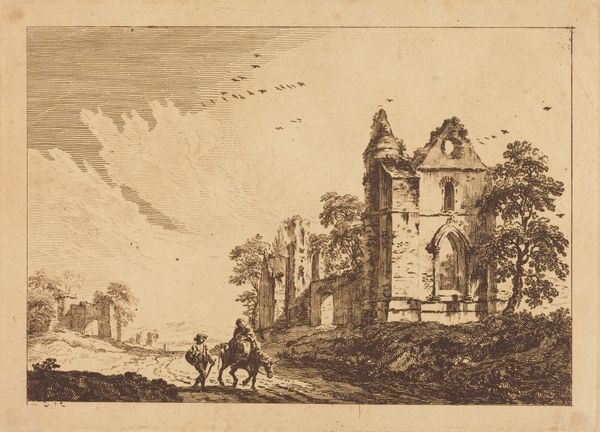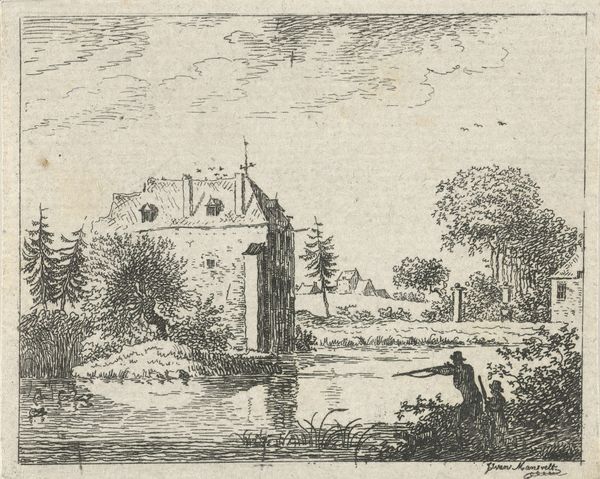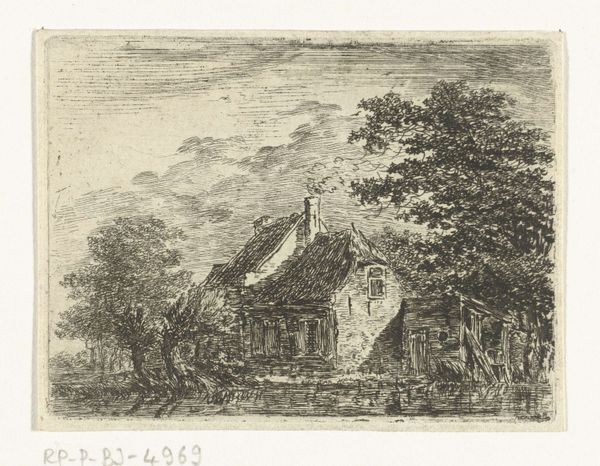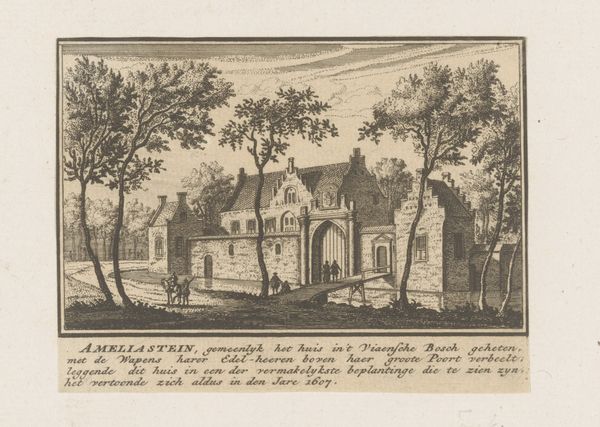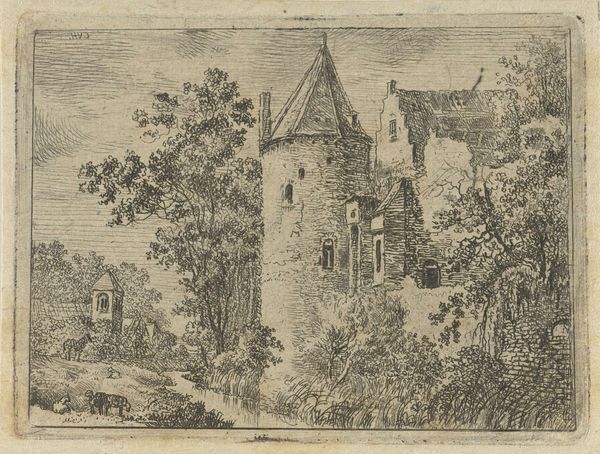
print, engraving
#
baroque
# print
#
landscape
#
history-painting
#
engraving
Dimensions: 55 mm (height) x 76 mm (width) (plademaal)
B. Flügge created this small landscape in 1759, using etching. This is an intaglio printmaking technique, where the artist uses acid to cut into a metal plate, in this case most likely copper. Consider how the material itself influences the appearance. The fine lines that define the forms are a direct result of the etching process. The acid bites into the metal, leaving behind grooves that hold the ink. The pressure of the printing press forces the paper into these grooves, transferring the image. The image shows a romanticized scene of rural life. But the very act of creating this print is tied to a larger system of production and consumption. Etchings like this would have been relatively affordable, allowing a wider audience to appreciate and collect art. The labor involved in creating the plate, preparing the ink, and running the press, all contribute to the social and cultural significance of the work. Recognizing the materials, the making, and its context allows us to move beyond simply admiring the image. We begin to understand the artistic, social, and economic forces that shaped its creation.
Comments
No comments
Be the first to comment and join the conversation on the ultimate creative platform.
